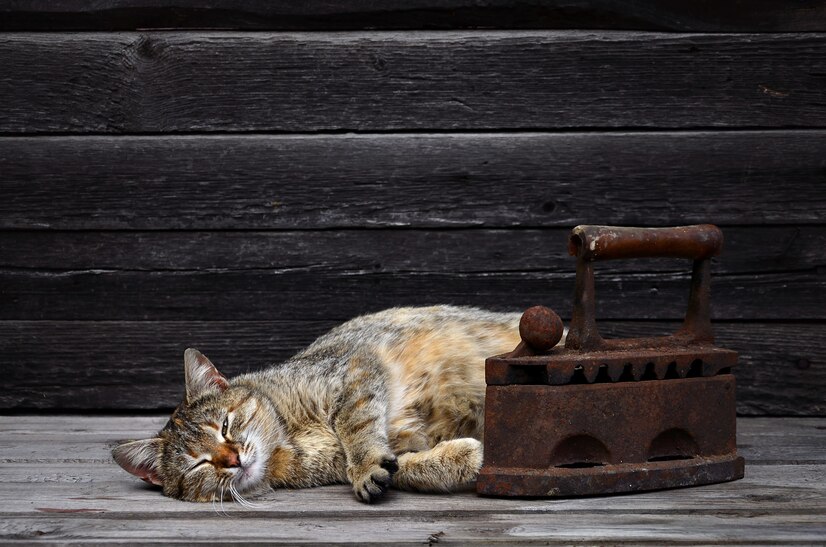Do you see many people craving chocolate and using it for relaxation and to reduce anxiety? How is it possible that chocolate can reduce anxiety and make people happy? The reason is simple: there is a compound in chocolate called Phenethylamine (PEA), which releases endorphins in the body, making people feel happy naturally.
But what about our furry friends like dogs, cats, or rabbits? In this discussion, we will discuss the question: “Can cats eat chocolate?” If not, how should you handle it if a cat eats or ingests a large amount?
Can Cats Eat Chocolate?
No, cats should never eat chocolate because pets and humans are entirely different creatures with different tastes and preferences. While we might enjoy chocolate, cats cannot because it contains two chemicals—theobromine and caffeine—that are highly toxic to them. Read Also why cat follow you everywhere
According to research, theobromine and caffeine poisoning occur at higher doses, while theobromine poisoning can happen with even a small amount of chocolate ingestion. Theobromine and caffeine poisoning directly attack major systems of the cat, including:
- Gastrointestinal system
- Cardiovascular system
- Central nervous system
The next question that arises is how long it takes for chocolate poisoning symptoms to appear. If your cat has ingested chocolate, severe signs will start to appear after 12 hours of ingestion. However, as mentioned earlier, theobromine poisoning can occur within 2 to 6 hours. Read Also here
If your cat eats chocolate, there are two stages of poisoning: “mild chocolate poisoning” and “moderate chocolate poisoning.” Mild chocolate poisoning affects the gastrointestinal system, while moderate poisoning impacts the cardiovascular system.
The severity of poisoning in cats depends on the type and amount of chocolate consumed. If your cat shows signs of poisoning, don’t wait—contact your vet immediately and inform them about the type and amount of chocolate ingested.
In most cases, chocolate poisoning resolves within 3 to 5 days, although this can vary depending on the vet’s treatment, the amount of chocolate ingested, and the age of the cat. Read Also stages of kidney disease in cats
To sum up, it’s essential to keep chocolate out of your cat’s reach, including wrappers, as even a slight bite can be harmful.
Most Dangerous Types of Chocolates for Cats
All types of chocolate are harmful to cats but some of them are listed below:
· Dark chocolate
· Baker’s chocolate
· Semi-sweet chocolate
· Unsweetened cocoa powder
· Milk chocolate
Symptoms of Chocolate Poisoning in Cats
The symptoms of chocolate poisoning depend on the type and amount of chocolate your cat has ingested. According to Dr. John, if your cat consumes 5.7 grams of Baker’s Chocolate or 14.2 grams of Semisweet Chocolate, toxicity is confirmed. The symptoms that can appear include: Read Also can a dog get a cat pregnant
- Restlessness
- Vomiting
- Diarrhea
- Increased rate of breathing/Fast breathing or panting
- Increased heart rate/High heart rate
- Heightened temperature
- Seizures
- Muscle rigidity
- Hyperactivity or agitation
- Increased drinking and urination
- Abnormal heart rhythm/Irregular heartbeat
- Difficulty walking
- Tremors
How Much Chocolate Is Bad for Cats?
Chocolate is a sweet treat for humans, but it’s not the best choice for our furry friends. Below are some types of chocolate with their respective amounts that are toxic to cats. If you want to know what amount is dangerous, read the details carefully because we can’t compromise the health of our cats. Read Also kidney disease in cats
- Milk chocolate: 32.3 grams
- Dark chocolate: 14.2 grams
- Semisweet chocolate: 14.2 grams
- Baking chocolate: 5.7 grams
Note: White chocolate is less of a concern because it contains lower levels of harmful chemicals like theobromine and caffeine. However, its amount should never exceed 1.1 ounces (31.18 grams).
Why Is Chocolate Bad for Cats?
Why can’t cats eat chocolate? The reason is simple: the ingredient called theobromine in chocolate cannot be metabolized naturally within a cat’s body like it can in humans. This is a problem for cats and can lead to liver failure. Learn about can cats eat garlic
Since chocolate cannot be metabolized naturally in a cat’s body, you should avoid giving chocolate to your cat, except for small amounts of white chocolate (up to 31 grams). However, it is best to avoid such treats altogether and stick to meat and specially formulated cat foods that brands offer for their growth and shiny coat. There are a few safe treats for your cat that can be given in moderation, including:
- Pumpkin
- Mango
- Watermelon
- Carrots
Always discuss any dietary changes with your vet first.
What to Do if Your Cat Ate Chocolate
If you see your cat eating chocolate (other than white chocolate), don’t wait—consult your vet immediately. If you have a trusted vet, that’s great. If not, you can call the Pet Poison Helpline, which offers 24-hour service to handle poisoning in cats.
If you’re a little distance away and see your cat eating chocolate, try to take a video of how much and what type of chocolate your cat has ingested. This information will help your vet provide the best treatment.
Do not try to induce vomiting in your cat at home, as this can lead to serious problems. It’s best to contact your vet as soon as possible. Read about why your cat follow you to the bathroom
Note: You should clear any remaining chocolate from your cat’s mouth to prevent further ingestion.
Warning: In today’s world, with advancements in veterinary care, there have been significant changes in treatment methods. In the past, people used hydrogen peroxide to induce vomiting in cats. However, it is now considered harmful and is no longer recommended. Hydrogen peroxide can cause gastrointestinal injury in cats and should be avoided.
Treatment of Chocolate Poisoning in Cats
The very first step your vet will take is to induce vomiting in your cat to remove the chocolate that has been ingested and could potentially cause liver failure or severe health issues.
According to Dr. Howard, most vets use activated charcoal to reduce further absorption of the chocolate, which may still be in your cat’s mouth or on its tongue.
Your vet may also perform some tests, including:
- Fluid therapy
- Blood test
- Urine test
- ECG
Along with these tests, your cat might need to be admitted to the vet for the day. If a large amount of chocolate has been ingested and no accurate alternative solution is found, the risk of severe outcomes, including death, is possible.
The good news is that if you take your cat to the vet as quickly as possible, inducing vomiting can help save your cat from severe diseases or death.
Prevention of Chocolate Poisoning in Cats
If you own a Bengal, Ragdoll, or Siamese cat, you might notice that your cat follows you everywhere, whether you’re in the bathroom, kitchen, or even outside the house. To keep your cat safe, make sure to securely lock away any chocolate, whether it’s in the refrigerator, a locked drawer, or any other place where it might be stored. Is kale safe for cats
If you eat chocolate, be cautious with its wrapper as well. Don’t throw it away carelessly—dispose of it properly in a basket. Additionally, try to avoid eating chocolate in front of your cat, as they often perform their owner’s actions.
Provide your cat with proper food using automatic feeders and create high vantage points, such as with a cat window perch, to keep them engaged and entertained with their surroundings.
If you have other tips for keeping cats away from chocolate, please share them in the comments below.
Read Also



